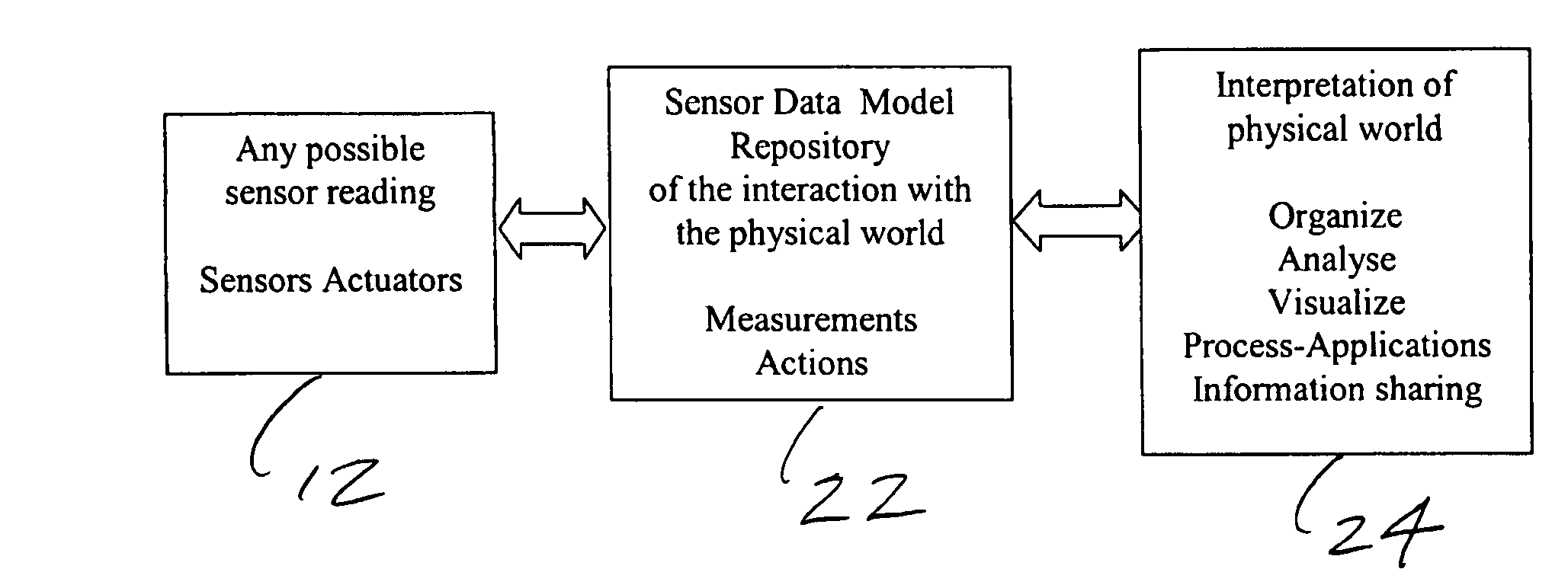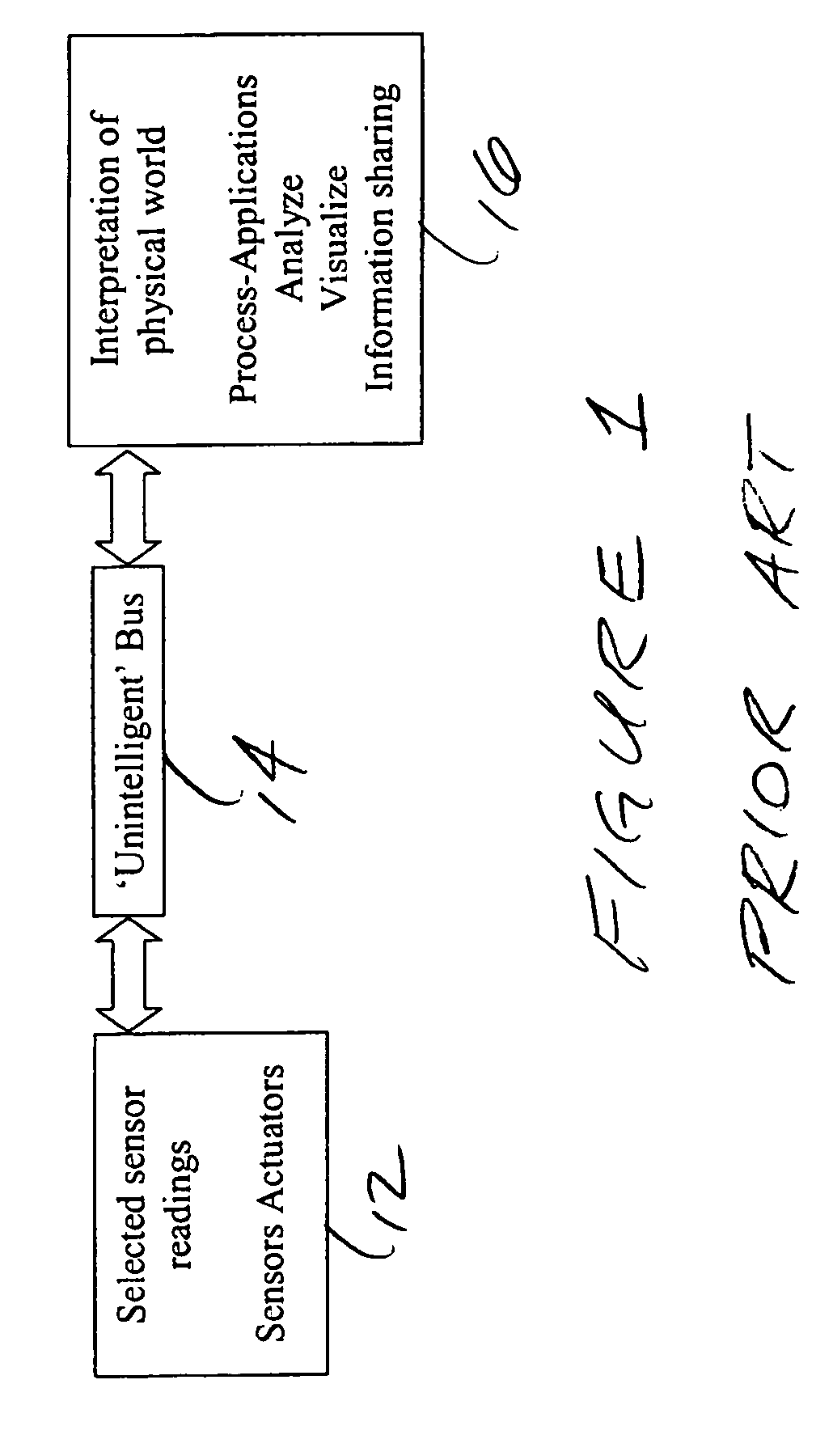Method of and system for managing data in a sensor network
a sensor network and data management technology, applied in the field of computer databases, can solve the problems of not being able to handle the “avalanche” of sensor data, the reading failure rate in an automated environment is still so high, and the bar code labels themselves are problemati
- Summary
- Abstract
- Description
- Claims
- Application Information
AI Technical Summary
Benefits of technology
Problems solved by technology
Method used
Image
Examples
Embodiment Construction
[0044] The above described problems can be addressed by employing a Sensor Network environment using State-Aware Zones and Zone transitions. This application agnostic Sensor Network environment is the organizing principle for sensor data. The system organizes the sensor data by representing it in a data model that maps the operational environment and its processes. Now software applications can access the data in a form they are familiar with and they do not have to worry about the sensor data acquisition. Process design is simplified in that it can be formulated in the application model layer and then translated and executed on the sensor data model layer.
[0045] The Sensor Network environment includes the location, containment, inheritance, coverage, connectivity and constraints of sensors. This environment configuration helps define the operational and business process rules that apply in the Sensor Network. These operational and business process rules can be defined through laye...
PUM
 Login to View More
Login to View More Abstract
Description
Claims
Application Information
 Login to View More
Login to View More - R&D
- Intellectual Property
- Life Sciences
- Materials
- Tech Scout
- Unparalleled Data Quality
- Higher Quality Content
- 60% Fewer Hallucinations
Browse by: Latest US Patents, China's latest patents, Technical Efficacy Thesaurus, Application Domain, Technology Topic, Popular Technical Reports.
© 2025 PatSnap. All rights reserved.Legal|Privacy policy|Modern Slavery Act Transparency Statement|Sitemap|About US| Contact US: help@patsnap.com



